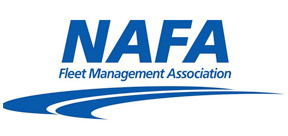Rechanneled stream is centerpiece for blooming bio habitat

When the city of Mentor, Ohio, acquired the nearly 60-acre property at 6776 Haisley Road from the Schultz family in 2014, the plan was to transform what was once a commercial plant nursery into a favorite spot for wildlife and nature lovers.
It wouldn’t be easy. It was a flat and sandy piece of land that lacked the topography for a park, so the city created a landscaping plan that would transform the site into the greenspace that exists today.
Initial improvements to what is now called SpringBrook Gardens Park included the creation of strategic mounds and plantings, along with 1.7 miles of walking trails and an expanded pond and boardwalk. But there was still more work to do.
Thanks to $258,450 in funding from the Ohio Environmental Protection Agency Section 319 grant program, as well as a partnership with the Chagrin River Watershed Project and Lake County Soil and Water, the city completed its wetlands restoration project in 2022 and is excited to watch it grow.
A streaming service
According to Mentor Parks and Recreation director Kenneth Kaminski, the goal of the project, which was carried out in two phases, was to reestablish the ecological function of the onsite manmade stream.
Prior to its restoration, the waterway flowed through the property as a steep-banked, channelized ditch that resulted in high-velocity flows, water quality degradation, and a lack of habitat on the grounds. He contracted Biohabitats, a Maryland firm that restores and regenerates natural ecosystems, which utilized bioengineering methods to restore 650 linear feet of streambank and revegetate one acre of floodplain with all native species.

“Prior to that, we had a lot of invasive trees and shrubs that we wanted to get rid of,” Kaminski said. “Now we have an engineered streambed mix along with in-stream structures that were used to stabilize the channel and its new path through the property. The streambanks were graded to create a more natural slope and replanted with native vegetation to help decrease potential erosion and sedimentation while increasing habitat.”
Naturally, there were challenges along the way. Some residents wondered how the project might use and affect the surrounding property and amenities, including two bridges that were already in existence.
“I don’t want to say that we were landlocked, but we had limited space,” Kaminski confirmed.
The city relied on the expertise of the Chagrin River Watershed Project and Lake County Soil and Water and followed their lead when creating a plan with Biohabitats that would meet their needs. Biohabitats developed a restoration strategy that took advantage of the high sand content in the site’s soil and took an approach that merged riffle complexes and sand seepage berms that extend valley-wide, perpendicular to the stream’s flow. According to the company’s website, these complexes retain smaller storm events on the floodplain and allow for denitrification as the water seeps through the berms while safely conveying larger storm events through the site.
The design not only improved the quality of the water entering Mentor Marsh and Lake Erie, but also created a biodiverse, ecologically functioning stream and wetland complex that enhanced the overall park.
“The before and after pictures are amazing,” Kaminski said.
Benefits abound
Two years after the project’s completion, the restoration has offered Springbrook Gardens Park several benefits. Naturally, Kaminski said, the restored wetland has added to the property’s overall aesthetic with a stream that now looks and feels like a natural oasis on the grounds. There has also been an educational benefit that allows the staff at the Natural Resource Department to develop programming that ties into the stream as well as the insects, fish and birds associated with it.
Speaking of birds, there has been a huge uptick in the number of species that now call the park home or stop by as part of a migratory pattern.
“Birding is very big in this park,” he said. “This used to be a flat sand field that had been stripped of its topsoil. What this project has done is to bring in a significant amount of birds that stop here, go up to our nature preserve or move on. It’s very impressive.”
For any community considering a similar project, Kaminski encouraged it to find partners who can help guide them throughout the process and to be patient when preparing and applying for financial assistance. “It took us about a year, in total, from the start, from preparing the grant to submitting the grant, receiving the grant and then getting the necessary permits to begin. But if you partner with people who know, understand, and are able to help you with the plans, they can help monitor your expectations,” Kaminski said. “When the project is done, it isn’t going to look too exciting; but two or three years later, when all of the native grasses have grown, it really looks good.”
Next Article: Lake County, Park City, IL., undertakes efforts to reduce flooding




